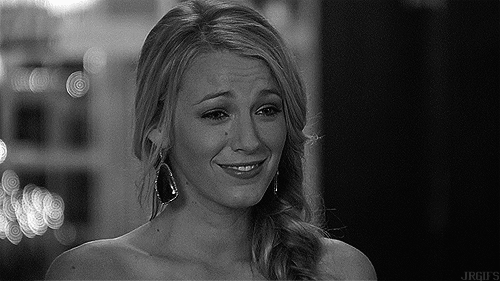Take a photo of a barcode or cover
4,5*
Esta es la primera vez que leo a Edith Wharton y no puedo hacer más que alegrarme de que el club pickwick me la haya descubierto.
La casa de la alegría es la segunda novela publicada de Wharton y la que la consagró como una de las escritoras norteamericanas más importantes.
Seguimos a Lily Bart, huérfana a los 19 años, acogida por una tía que pertenece a la clase alta neoyorquina, Lily con su escasa renta y lo poco que recibe de su protectora, se las ve y se las desea para mantenerse en esa opulencia a la que tan acostumbrada está. Sabe que para mantener este tren de vida va a tener que casarse, porque una mujer huérfana, soltera y si dinero en esa época está condenada a tener que trabajar por un misero sueldo, sin ningún tipo de reconocimiento o independencia.
Lily sabe que su situación es complicada, ha de casarse para salir de esta situación, pero no quiere casarse por dinero, y tampoco es capaz de vivir sin él. Esta dualidad es la que se desarrolla a lo largo de toda la historia, la vemos tomar decisiones equivocadas en incontables ocasiones, pero también la vemos rectificar y salir exitosa de algunas situaciones complicadas.
Lily es un personaje muy complejo, tremendamente bien construido, con sus luces y sombras, sus contradicciones, errores, rectificaciones,... con una personalidad muy bien definida, en definitiva, un personaje de esos que se queda contigo, me recuerda (salvando las distancias) a Anna Karennina e incluso a Emma Bovary, pero Lily Bart me cae mejor, a pesar de ser extremadamente calculadora y cínica, es un personaje que me ha conquistado.
De la misma manera que Lily me ha conquistado, la pluma de Edith Wharton también. Me parece muy valiente por su parte que, en la época en la que escribió esta novela, haga unas reflexiones tan feministas sobre la situación tan precaria de las mujeres y sobre el matrimonio.
En definitiva, me ha encantado y sin duda seguiré conociendo poco a poco toda la obra de Edith Wharton.
Esta es la primera vez que leo a Edith Wharton y no puedo hacer más que alegrarme de que el club pickwick me la haya descubierto.
La casa de la alegría es la segunda novela publicada de Wharton y la que la consagró como una de las escritoras norteamericanas más importantes.
Seguimos a Lily Bart, huérfana a los 19 años, acogida por una tía que pertenece a la clase alta neoyorquina, Lily con su escasa renta y lo poco que recibe de su protectora, se las ve y se las desea para mantenerse en esa opulencia a la que tan acostumbrada está. Sabe que para mantener este tren de vida va a tener que casarse, porque una mujer huérfana, soltera y si dinero en esa época está condenada a tener que trabajar por un misero sueldo, sin ningún tipo de reconocimiento o independencia.
Lily sabe que su situación es complicada, ha de casarse para salir de esta situación, pero no quiere casarse por dinero, y tampoco es capaz de vivir sin él. Esta dualidad es la que se desarrolla a lo largo de toda la historia, la vemos tomar decisiones equivocadas en incontables ocasiones, pero también la vemos rectificar y salir exitosa de algunas situaciones complicadas.
Lily es un personaje muy complejo, tremendamente bien construido, con sus luces y sombras, sus contradicciones, errores, rectificaciones,... con una personalidad muy bien definida, en definitiva, un personaje de esos que se queda contigo, me recuerda (salvando las distancias) a Anna Karennina e incluso a Emma Bovary, pero Lily Bart me cae mejor, a pesar de ser extremadamente calculadora y cínica, es un personaje que me ha conquistado.
De la misma manera que Lily me ha conquistado, la pluma de Edith Wharton también. Me parece muy valiente por su parte que, en la época en la que escribió esta novela, haga unas reflexiones tan feministas sobre la situación tan precaria de las mujeres y sobre el matrimonio.
En definitiva, me ha encantado y sin duda seguiré conociendo poco a poco toda la obra de Edith Wharton.
Recommend for fans of The Beautiful and the Damned by Scott F. Fitzgerald or Vanity Fair by William Thackeray.
The riches to rags story of Lily Barton in early 1900’s New York. She’s too spoiled and careless to manage her money, and too prideful to prostitute herself in marriage. Through a series of financial and social blunders she loses her place in society rung by rung.
Edith Wharton’s prose is as beautiful, insightful, and depressing as ever.
The riches to rags story of Lily Barton in early 1900’s New York. She’s too spoiled and careless to manage her money, and too prideful to prostitute herself in marriage. Through a series of financial and social blunders she loses her place in society rung by rung.
Edith Wharton’s prose is as beautiful, insightful, and depressing as ever.
HUGE SPOILERS AHEAD
I did not like Lily because she was indeed a flower, a Lily, always a decorative element but no personal will, no strenght, no resolution. It made me mad that she could not stick to any decision and that was exactly what ended up killing her. It also made me mad that she died because they always kill the female main character and it os frustrating.
I did like the development of the novel, the drama, the characters and their relationships. We needed a Blair Waldorf as main character to face that Bertha Dorset.
I did not like Lily because she was indeed a flower, a Lily, always a decorative element but no personal will, no strenght, no resolution. It made me mad that she could not stick to any decision and that was exactly what ended up killing her. It also made me mad that she died because they always kill the female main character and it os frustrating.
I did like the development of the novel, the drama, the characters and their relationships. We needed a Blair Waldorf as main character to face that Bertha Dorset.
emotional
reflective
sad
medium-paced
Plot or Character Driven:
Character
Strong character development:
Complicated
Loveable characters:
No
Diverse cast of characters:
No
Flaws of characters a main focus:
Yes
challenging
reflective
sad
slow-paced
Plot or Character Driven:
Character
Strong character development:
Yes
Loveable characters:
Complicated
Diverse cast of characters:
No
Flaws of characters a main focus:
Yes
This will be a very long and Gossip Girl related review. You've been warned. For those who are not interested in the comparisson between the two, this is what I have to say about the novel individually:
- Extremely depressing.
- I have read several naturalistic and realistic novels foregrounding a woman in (high) society, Effi Briest, Madame Bovary, but this is by far the best. I disliked Emma Bovary, Effi was boring and in both novels the men were intolarable. The House of Mirth features actually likable characters, such as Lily Bart and Lawrence Selden. Lily remains a sympathetic and you keep supporting her despite all of the unlucky events.
- Wonderfully written.
- It's feminist literature! Lily is ambigous, strong, and yet she is not. Complicated women, written by women, at the dawning of the 20th century!!!
- Will I read more by Wharton? Most definitely.
Now, why are Gossip Girl and The House of Mirth related? As soon as I started to read this novel, it reminded me of Gossip Girl (check my updates if you don't believe me). It comes down to this:
Ever felt that Gossip Girl was too optimistic and that the happy endings were ridiculous?? If so, read this book. You'll be satsified.
The influences of Wharton, and similarities, in Gossip Girl in abundance. Here's a list of what I found:
1. What's in a name? The House of Mirth's Lily Bart does sound very familiar... That's right; Gossip Girl's Lily van der Woodsen/Rhodes marries Bart Bass in season one. This marriage does not seem filled by love, it mirrors more Lily Bart's business in finding a suitable marriage partner.
2.Lily Bart can be read of a mix of Serena van der Woodsen and Blair Waldorf. She has Blairs feminist views, Serena's easy going and flirty ways and also trouble with men, and both are involved in different ways with the ultimate outsider. In Lily's case it is Selden, in Serena's and Blair's it is Dan.

3. The opening scene in both works is identical. Grand Central Station? Check? Girl arriving at the station? Check. Boy gazing at dream girl? Check. This is some great intertextuality here.

4. Lawrence Selden = Dan Humphrey. That much is obvious. The outsider who has to work for his money, and is seen as an "escape" from the clingy society. Both Blair and Serena use him to get away from that "cage". Still, Dan/Selden has ties to the upper class, and eventually becomes part of it.

5. One of Wharton's other works, The Age of Innocence, is featured in season two. How meta!

6. Replace every time tea is mentioned in the novel with alcohol beverages and we are even.

7. The fact that the setting is exactly the same; New York upper class. The only difference is the time, the gap is about 100+ years.

8. Blair Waldorf is Gossip Girl's most bad-ass character, just like Lily she is a strong character, complicated (more than Serena), ambiguous and so on. This quote sums it up:

9. Tradition is still highly valued. The girls have to be introduced at Cotillon, one's outer appearances is linked to one's worth, manners are important: much of the society that Wharton describes is still present. It is all about being perceived in The House of Mirth, and this resonates too with Gossip Girl. The gossipsite leaks sensitive information about the characters, undergoing this public embarrasment constantly and having to deal with "how people will think of me". The validity of the information is not important, just like in Lily's case in the novel. The role of gossip and the focus on being perceived are big similarities between the two works.

10. Gambling and money. Lily does love to gamblewhich causes much of her financial trouble, just like her plunge with Trenor , and this big part of gambling also resonates with the TV show. The huge risks that were taken just because of money are too many to mention. A few; Blair being traded over a hotel (honestly how could this plotline even exist???), Chuck's financial hotel problems, Blair's "I am all in", the many legacies that are being paid and not paid, Carter Baizen shifty underground gambling... the list goes on.

Am I going too far in relating this? Oh yes.
- Extremely depressing.
- I have read several naturalistic and realistic novels foregrounding a woman in (high) society, Effi Briest, Madame Bovary, but this is by far the best. I disliked Emma Bovary, Effi was boring and in both novels the men were intolarable. The House of Mirth features actually likable characters, such as Lily Bart and Lawrence Selden. Lily remains a sympathetic and you keep supporting her despite all of the unlucky events.
- Wonderfully written.
- It's feminist literature! Lily is ambigous, strong, and yet she is not. Complicated women, written by women, at the dawning of the 20th century!!!
- Will I read more by Wharton? Most definitely.
Now, why are Gossip Girl and The House of Mirth related? As soon as I started to read this novel, it reminded me of Gossip Girl (check my updates if you don't believe me). It comes down to this:
Ever felt that Gossip Girl was too optimistic and that the happy endings were ridiculous?? If so, read this book. You'll be satsified.
The influences of Wharton, and similarities, in Gossip Girl in abundance. Here's a list of what I found:
1. What's in a name? The House of Mirth's Lily Bart does sound very familiar... That's right; Gossip Girl's Lily van der Woodsen/Rhodes marries Bart Bass in season one. This marriage does not seem filled by love, it mirrors more Lily Bart's business in finding a suitable marriage partner.
2.Lily Bart can be read of a mix of Serena van der Woodsen and Blair Waldorf. She has Blairs feminist views, Serena's easy going and flirty ways and also trouble with men, and both are involved in different ways with the ultimate outsider. In Lily's case it is Selden, in Serena's and Blair's it is Dan.

3. The opening scene in both works is identical. Grand Central Station? Check? Girl arriving at the station? Check. Boy gazing at dream girl? Check. This is some great intertextuality here.

4. Lawrence Selden = Dan Humphrey. That much is obvious. The outsider who has to work for his money, and is seen as an "escape" from the clingy society. Both Blair and Serena use him to get away from that "cage". Still, Dan/Selden has ties to the upper class, and eventually becomes part of it.

5. One of Wharton's other works, The Age of Innocence, is featured in season two. How meta!

6. Replace every time tea is mentioned in the novel with alcohol beverages and we are even.

7. The fact that the setting is exactly the same; New York upper class. The only difference is the time, the gap is about 100+ years.

8. Blair Waldorf is Gossip Girl's most bad-ass character, just like Lily she is a strong character, complicated (more than Serena), ambiguous and so on. This quote sums it up:

9. Tradition is still highly valued. The girls have to be introduced at Cotillon, one's outer appearances is linked to one's worth, manners are important: much of the society that Wharton describes is still present. It is all about being perceived in The House of Mirth, and this resonates too with Gossip Girl. The gossipsite leaks sensitive information about the characters, undergoing this public embarrasment constantly and having to deal with "how people will think of me". The validity of the information is not important, just like in Lily's case in the novel. The role of gossip and the focus on being perceived are big similarities between the two works.

10. Gambling and money. Lily does love to gamble

Am I going too far in relating this? Oh yes.
sad
slow-paced
emotional
reflective
slow-paced
Plot or Character Driven:
Character
Strong character development:
Yes
Loveable characters:
Complicated
Diverse cast of characters:
No
Flaws of characters a main focus:
Yes
I found this book incredibly sad but beautiful. Loved the main character, Lily Bart.




